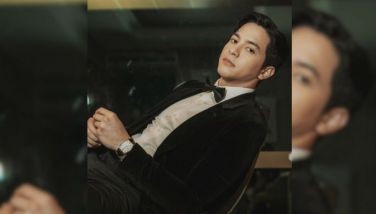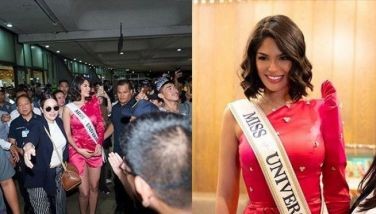‘All-purpose’ vs. ‘vortex’ public figures
November 28, 2006 | 12:00am
 The principal reason why the First Gentleman claims he is a private individual in that "slew" of libel cases he’s filed against journalists is to avoid a heavy burden of proof he would have to bear were he to be deemed a public official or a public figure.
The principal reason why the First Gentleman claims he is a private individual in that "slew" of libel cases he’s filed against journalists is to avoid a heavy burden of proof he would have to bear were he to be deemed a public official or a public figure.
To recap, the rule is that truth is a complete defense to libel charges by a public official. But even if the defamatory statement is false, the public official still has to prove actual malice on the part of the accused, meaning that the latter made the statement knowing it to be false, or with reckless disregard of whether it was false or not.
This New York Times vs. Sullivan test, enunciated by the US Supreme Court in 1964, has been adopted in the Philippines in several cases. It has also been extended in both jurisdictions to both public officials and public figures.
Whether the New York Times rule has been extended to private individuals is a bit more problematical. It is arguable that it has not, and that a test much less than "actual malice" may be sufficient to convict in the case of defamed private persons.
In the "actual malice" test, which requires knowledge that the defamatory statement was false, or made in reckless disregard of the truth, the key word is "reckless." Thus, mere negligence in checking the facts is not enough. The ruling in New York Times vs. Sullivan makes clear that a mere failure to investigate is not reckless disregard.
Moreover, actual malice has to be proved with "convincing clarity" not mere preponderance of evidence. I guess this means more than 51% but much less than 100% ("beyond reasonable doubt"), perhaps a quantum of evidence in the high 80’s.
Anyway, one sees the importance of the distinction being made by the FG’s lawyers. When they say publicly that the FG, as a private individual, is "not fair game" for media, they’re not really taking the patently untenable position that media can’t say anything, good or bad, about him. What they’re doing is looking ahead to the trial and figuring out what they need to prove to convict the accused media persons.
It seems easy enough to say that the FG is not a public official. After all, he is neither an elected nor an appointed government official. Media organizations who have rushed to the aid and comfort of beleaguered colleagues point to the existence of an office called the "Office of the First Gentleman," which is located in Malacañang and is run by a person with the rank of Undersecretary.
But I doubt that the FG may be deemed a public official on that score alone. Did Ming Ramos and Loi Ejercito (before she was elected Senator) become public officials on that account? At the time they were First Ladies, both were decidedly and studiedly very private persons. Cory Aquino, of course, was a widow and didn’t have this problem.
Even if they both occasionally rode Palace vehicles marked with the number 1, and enjoyed certain perquisites of diplomatic protocol, neither Mrs. Ramos nor Mrs. Estrada was deemed a public official by the accidental (?) circumstance of being married to one. I understand that the Office of the First Lady or the First Gentleman is there to assist him or her sort out the multitudinous social obligations that such a person must endure because of an essentially temporary situation in life.
Evidently, Imelda Romualdez-Marcos was not a usable precedent because, aside from being "Pers Ledi," she also became the highly visible Governor of Metro Manila, then member of the Batasang Pambansa and Minister of Human Settlements, all of which were indubitably government positions.
So, even if FG Mike Arroyo may not be a public official as a matter of law, is he nevertheless a public figure? As libel plaintiff, must he then prove with "convincing clarity" that the media personalities he charged not only pandered outright falsehoods but did so with knowledge of their falsity or with reckless disregard for the truth?
But what is a public figure? A leading American treatise on Tort Law once defined that person to be: "…(A) person who by his accomplishments, fame, or mode of living, or by adopting a profession or calling which gives the public a legitimate interest in his doings, his affairs, and his character, has become a ‘public personage.’ He is, in other words, a celebrity…It includes…anyone who has arrived at a position where public attention is focused upon him as a person."
Easy examples given by this authority include actors, professional basketball players, boxers and other entertainers. The definition also encompasses famous inventors, explorers, and war heroes, including, I suppose, ordinary soldiers such as those front-line American commanders in Iraq who allow themselves to be interviewed by "embedded" reporters on the political correctness of that war.
One US Supreme Court case classified public figures into three: involuntary, all-purpose and limited. Hypothetically, the Court said, it is possible for someone to become a public figure "through no purposeful action of his own," although examples of the "truly involuntary public figures" are "exceedingly rare."
Another category of public figures are those who "occupy positions of such persuasive power and influence" that they must be deemed "public figures for all purposes."
Finally, there are those public figures that "have thrust themselves to the forefront of particular public controversies in order to influence the resolution of the issues involved." This is a more common class, those individuals that fling themselves into the "vortex" of public controversy in order to influence its outcome. One becomes a ‘limited" public figure for a particular matter because he has thrust himself into that vortex. Hence, he is sometimes referred to also as a "vortex" public figure.
None of the authorities I have looked up, both here and abroad, have tackled the specific issue of whether First Ladies and/or First Gentlemen may be deemed public figures of whatever category. One could argue that an FL or FG may be an "all-purpose" public figure, or at least a "vortex" public figure, even if an "involuntary" one.
But, hold on, does being deemed a private individual provide a safe harbor for libel plaintiffs who are uncomfortable with the actual malice test? Not necessarily. Courts, it seems, remain ambivalent about whether private persons merit special protections from the slings and arrows of "uninhibited, robust and wide-open" debate on public issues.
(To be continued)
BrandSpace Articles
<
>
- Latest
- Trending
Trending
Latest
Trending
Latest
Recommended

April 29, 2024 - 9:15am



























